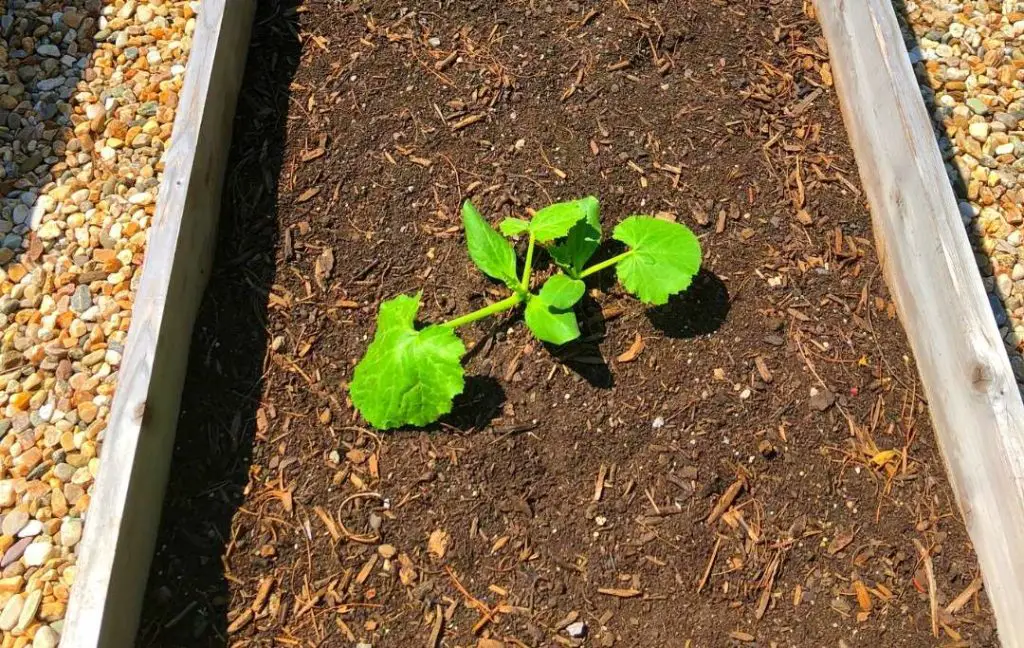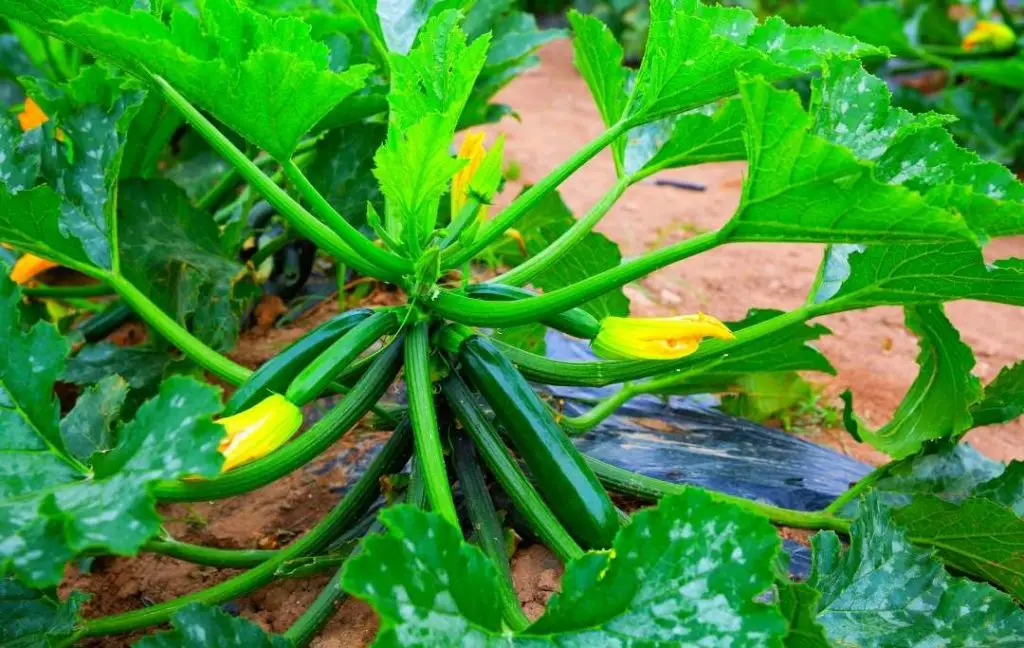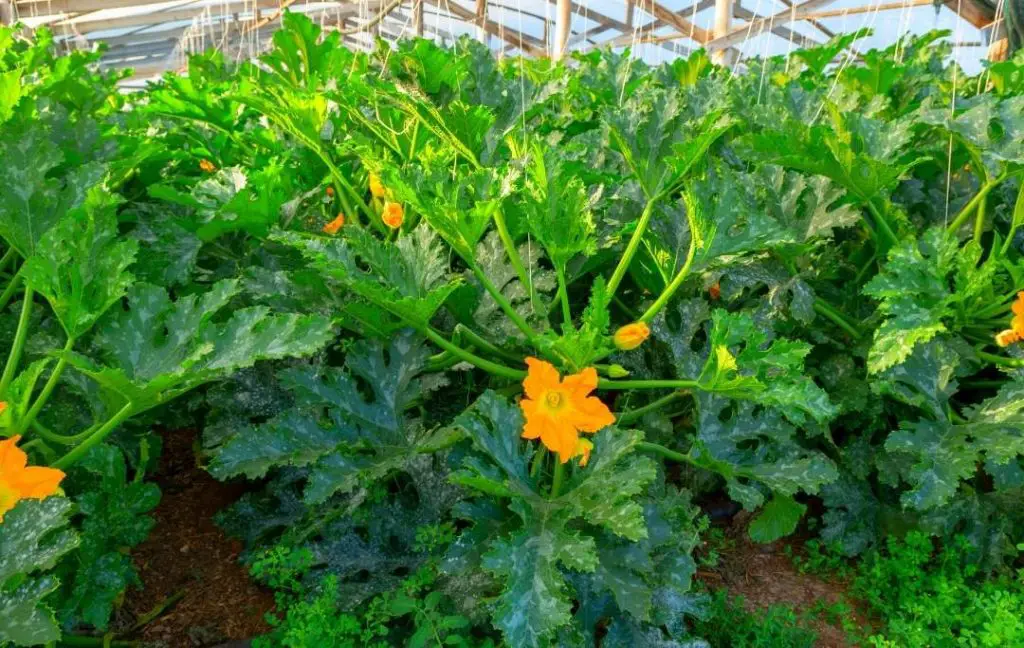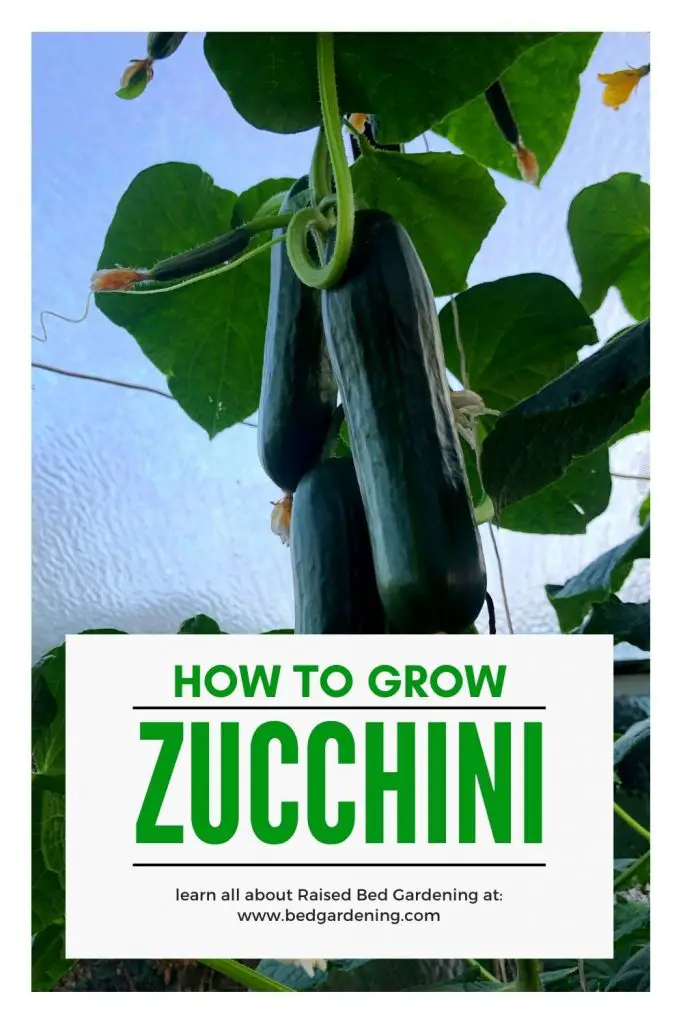Zucchini grows well in a raised bed. It is good news for vegetable lovers because due to limited space people are not interested in growing vegetables in their garden. They just plant flowers so they will be satisfied with their sense of gardening.
Some vegetables are easily grown in raised beds, zucchini is one of them. You just need a 1 inch deep raised bed for this purpose. For a balanced healthy diet, you should add vegetables to your diet plan and get fresh vegetables from your garden. You can make many dishes from zucchini like fritters, soup, and noodles.
DIFFERENT VARIETIES OF ZUCCHINI

There are different varieties of zucchini that have different sizes and shapes. But you will get the same nutrient value from all types. Here I am going to discuss some varieties of zucchini.
- Ambassador: This variety takes 50 days to harvest. The color of this type of zucchini is dark green and the shape is cylindrical.
- Eight Ball: This variety takes 40 days to harvest. The color of this variety is dark green and the shape is just like a globe. Its flavor is nutty and buttery.
- French White: The maturity time of this type is 50 days after planting. The color of this variety is white and it is suitable for a small garden.
- Spacemiser: Within 45 days you are able to get the full tender size of this green color vegetable. This small bush type plant will be able to give you high production.
- Seneca: the maturity time for this wonderful variety is 42 days. The color of this variety is dark green and the shape is cylindrical.
- Gold Rush: The maturity time of this variety is 45 days which is similar to other varieties. The shape of this variety is cylindrical.
- Costata Romanesco: It has great taste, this grey-green fruit has a nutty flavor with pale green flecks.
GROWING STEPS OF ZUCCHINI

Zucchini is one of those vegetables which grows easily. By following four steps you will enjoy the fresh taste or flavor of zucchini in your food.
STEP 1
Zucchini can grow directly from the seeds and you cannot transplant it because it is a fragile plant. Before planting it you should wait for the last frost date, after passing the last frost start sowing your seeds into the soil of your raised bed.
Sowing seeds is not a difficult task, all the instructions are available on the seed packet. Try to plant 2 to 3 seeds in each divot because in this way you can ensure germination. If two or three plants grow from one hole you can take them out later after forming the first set of true leaves.
STEP 2
Without pollinators, you cannot get zucchini. If you want to attract pollinators, you will have to grow some attractive and colorful companion flowers like zinnias, cosmos, and calendula in your vegetable garden. In the presence of these flowers, bees and butterflies will easily attract.
If pollinators are not attracting in your vegetable garden then you can use another way for pollination which is hand pollinating. For this purpose, you need a small paintbrush and just have to gently remove pollen from the male flower and add to the female flower with the help of your hands. This little effort will result in the form of healthy zucchini.
Read More: What Flowers to Plant in Raised Beds?
STEP 3
Now the third step is to train the vines of zucchini. If you are growing them in a raised bed it is necessary to use a trellis. Zucchini can easily take over the space of other plants in your garden bed.
Don’t think that you don’t need trellis if you are growing them alone in a single raised bed in this situation they will disturb the neighboring plants. If you want to have good control over the Zucchini plants it is good to use trellises down the side of the garden to the ground.
This trick will be very beneficial because it increases the space of the garden and you can plant more veggies around the zucchini. Water is essential for any plant. You should make it possible to water them regularly as zucchini loves moisture. The other things which you should take care of are soil temperature and sunlight.
STEP 4
Zucchini needs 45 days to mature after planting when the length of them is about 5 to 6 inches, you can easily harvest them because they are tender and smaller. If you wait to grow them larger they will become woody and fibrous which is not good in flavor.
The size of zucchini will be seedy, pulpy, and bitter. The length of zucchini can increase 1 to 2 inches daily so you should be careful at the time of harvest and check your plants every day. You can use pruners or scissors to cut zucchini off at the stem, or you can gently twist them off the stem, now this healthy vegetable is ready for use.
GROWING TIPS

If you are a beginner in gardening then you have to follow some tips, it will be beneficial in your gardening work.
1- Growing Conditions
Before planting zucchini, you should be careful that you are able to provide all the necessary conditions for it to yield better. First, you have to choose the best site for your raised bed where your plant can get full sun.
The second condition is the soil of the raised bed must be rich and well-drained. You must care about the last expected frost and after that start planting zucchini. The third condition is regular watering because zucchini likes moisture in the soil. If the soil is dry out they will not be able to give you good fruit.
Read More: How to Build a Raised Bed for Cheap?
2- Avoid Overplanting
You should avoid over planting zucchini because each zucchini plant is able to produce 6 to 10 pounds of fruit throughout the growing season.
3- Pollination
Pollination is an important process in the growth of zucchini plants because each plant has both male and female part flowers. The female flower has an ovary and short stem while the male flower has a long and thin stem as compared to the female flower.
The process of pollination occurs with the help of bees and other insects. It is important to know that without pollination this plant does not bear fruits.
4- Feeding
Zucchini needs proper nutrients from the soil; you can say that they are heavy feeders. You should prepare the raised bed with lots of organic matter like compost and fertilizers. If the leaves of the plant will become pale or your plants seem weak then this is the time to use compost and kelp fertilizers (which is high in phosphorus fruit production) for the treatment of your plant.
You can also use a foliar spray of liquid fish. Too much nitrogen is not good for zucchini plants as it will diminish yield so don’t use high nitrogenous fertilizers.
Watering
This plant needs one inch of water every week in this way your soil will keep moist. When the bud of the plant is developing this time is very critical for watering. Once your plants are established then you can spread a layer of mulch with straw or dried leaves, which helps you to retain the moisture of the soil and reduce weeds.

